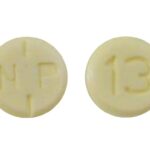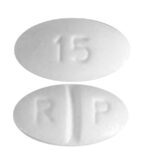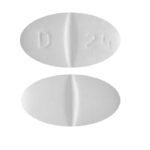Kodel: Uses, Dosage, High, Side Effects, Warnings

What is Kodel Jarabe?
Kodel bromhexina codeina jarabe is a Mexican cough suppressant and mucolytic which contains Bromhexine 160mg and Codeine 200mg as active ingredients. Bromhexine is a mucolytic agent that decreases sputum thickness. In order to enable the patient to breathe freely and deeply, it is used to treat conditions characterized by abnormal mucus secretion, such as the common cold, respiratory tract infections and influenza. Codeine is an opioid medicine that is converted into morphine in the body. It is widely used for pain relief and for the treatment of the symptoms of cough and colds.
However, according to the American addiction centers, because of high rates of abuse of codeine containing cough syrups like Kodel, the Drug Enforcement Administration has moved the substance into Schedule III, so it is more closely monitored and controlled when it is placed in cough syrups – its primary application in the US.
Cough syrups have been widely abused for years, especially by adolescents who want to get high or drunk without stealing alcohol or paying for illicit drugs. Since cough syrups are legal for purchase, many people have abused these medicines; however, since the alcohol has been removed and codeine-based cough syrups restricted, abuse patterns in the US have changed.
One of the ways that people abuse codeine cough syrups is by mixing them into alcoholic beverages or nonalcoholic sodas, creating a dangerously intoxicating mix with several nicknames. The most famous names are “lean,” “purple drank,” “syrup,” and “sizzurp.” These mixed drinks have been popularized by rappers and pop stars.
How should I take Kodel?
The use of Kodel syrup is restricted to adults and children 12 years of age and over. Take this medicine by mouth. Follow the directions on the prescription label. You can take it with or without food. If it upsets your stomach, take it with food. Use a specially marked spoon or container to measure each dose. Ask your pharmacist if you do not have one. Household spoons are not accurate. Do not overfill. Rinse the measuring device with water after each use. Take your medicine at regular intervals. Do not take it more often than directed.
A special MedGuide will be given to you by the pharmacist with each prescription and refill. Be sure to read this information carefully each time.
Talk to your pediatrician regarding the use of this medicine in children. This medicine is not approved for use in children.
Overdosage: If you think you have taken too much of this medicine contact a poison control center or emergency room at once.
NOTE: This medicine is only for you. Do not share this medicine with others.
What if I miss a dose?
If you miss a dose, take it as soon as you can. If it is almost time for your next dose, take only that dose. Do not take double or extra doses.
What should I tell my health care provider before I take this medicine?
They need to know if you have any of these conditions:
- Addison’s disease
- brain tumor
- diabetes
- gallbladder disease
- glaucoma
- head injury
- heart disease
- history of a drug or alcohol abuse problem
- history of irregular heartbeat
- if you often drink alcohol
- kidney disease
- liver disease
- low blood pressure
- lung or breathing disease, like asthma
- mental illness
- pancreatic disease
- seizures
- stomach or intestine problems
- thyroid disease
- trouble passing urine
- an unusual or allergic reaction to codeine, bromhexine, other medicines, foods, dyes, or preservatives
- pregnant or trying to get pregnant
- breast-feeding
What are the side effects of Kodel Jarabe?
Kodel may cause side effects. Tell your doctor if any of these symptoms are severe or do not go away:
- Irritation of ear.
- Allergic skin rash.
- Dizziness.
- Headache.
- Nausea.
- Vomiting.
- Diarrhea.
- Difficulty while breathing.
- Stomach pain
- Difficulty urinating
Some side effects can be serious. If you experience any of the following symptoms, stop taking Kodel syrup and call your doctor immediately or get emergency medical attention:
• agitation, hallucinations (seeing things or hearing voices that do not exist), fever, sweating, confusion, fast heartbeat, shivering, severe muscle stiffness or twitching, loss of coordination, nausea, vomiting, or diarrhea
• nausea, vomiting, loss of appetite, weakness, or dizziness
• inability to get or keep an erection
• irregular menstruation
• decreased sexual desire
• noisy or shallow breathing
• difficulty breathing or swallowing
• changes in heartbeat
• rash
• itching
• hives
• changes in vision
• seizures
Kodel may cause other side effects. Call your doctor if you have any unusual problems while you are taking this medication.
If you experience a serious side effect, you or your doctor may send a report to the Food and Drug Administration’s (FDA) MedWatch Adverse Event Reporting program online (http://www.fda.gov/Safety/MedWatch) or by phone (1-800-332-1088).
What may interact with this medicine?
Do not take this medicine with any of the following medications:
- alcohol
- antihistamines for allergy, cough and cold
- certain medicines for anxiety or sleep
- certain medicines for depression like amitriptyline, fluoxetine, sertraline
- certain medicines for seizures like carbamazepine, phenobarbital, phenytoin, primidone
- cisapride
- dofetilide
- dronedarone
- general anesthetics like halothane, isoflurane, methoxyflurane, propofol
- local anesthetics like lidocaine, pramoxine, tetracaine
- MAOIs like Carbex, Eldepryl, Marplan, Nardil, and Parnate
- medicines that relax muscles for surgery
- metoclopramide
- other narcotic medicines (opiates) for pain or cough
- phenothiazines like chlorpromazine, mesoridazine, prochlorperazine, thioridazine
- pimozide
- quinidine
This medicine may also interact with the following medications:
- antiviral medicines for hepatitis, HIV or AIDS
- atropine
- certain antibiotics like erythromycin, clarithromycin
- certain medicines for bladder problems like oxybutynin, tolterodine
- certain medicines for fungal infections like ketoconazole and itraconazole
- certain medicines for Parkinson’s disease like benztropine, trihexyphenidyl
- certain medicines for stomach problems like dicyclomine, hyoscyamine
- certain medicines for travel sickness like scopolamine
- ipratropium
- other medicines that prolong the QT interval (cause an abnormal heart rhythm)
- rifampin
This list may not describe all possible interactions. Give your health care provider a list of all the medicines, herbs, non-prescription drugs, or dietary supplements you use. Also tell them if you smoke, drink alcohol, or use illegal drugs. Some items may interact with your medicine.
What should I watch for while using this medicine?
Use exactly as directed by your doctor or health care professional. Do not take more than the recommended dose. You may develop tolerance to this medicine if you take it for a long time. Tolerance means that you will get less cough relief with time. Tell your doctor or health care professional if your symptoms do not improve or if they get worse.
If you have been taking this medicine for a long time, do not suddenly stop taking it because you may develop a severe reaction. Your body becomes used to the medicine. This does NOT mean you are addicted. Addiction is a behavior related to getting and using a drug for a nonmedical reason. If your doctor wants you to stop the medicine, the dose will be slowly lowered over time to avoid any side effects.
There are different types of narcotic medicines (opiates). If you take more than one type at the same time or if you are taking another medicine that also causes drowsiness, you may have more side effects. Give your health care provider a list of all medicines you use. Your doctor will tell you how much medicine to take. Do not take more medicine than directed. Call emergency for help if you have problems breathing or unusual sleepiness. Alcohol may interfere with the effect of this medicine. Avoid alcoholic drinks.
Where should I keep my medicine?
Keep out of the reach of children. This medicine can be abused. Keep your medicine in a safe place to protect it from theft. Do not share this medicine with anyone. Selling or giving away this medicine is dangerous and against the law.
Store at room temperature between 15 and 30 degrees C (59 and 86 degrees F). Protect from light. This medicine may cause accidental overdose and death if taken by other adults, children, or pets. Mix any unused medicine with a substance like cat littler or coffee grounds. Then throw the medicine away in a sealed container like a sealed bag or a coffee can with a lid. Do not use the medicine after the expiration date.





